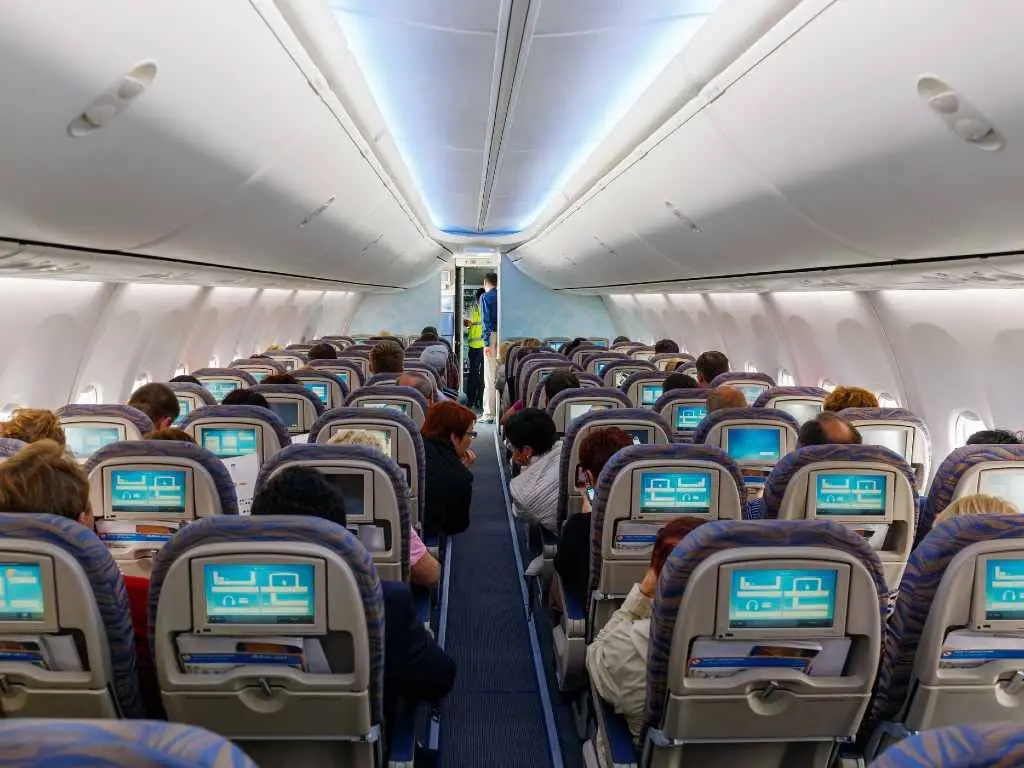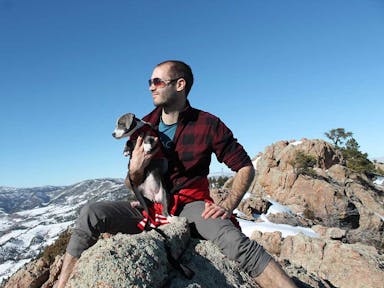
How to Get the Best Seat on a Plane
Table of Contents
From spots with no storage under the seats in front to seats that don’t recline, there are a lot of potential annoyances that can happen if you’re not savvy about where you sit on a plane. However, there’s no one-size-fits-all answer when it comes to the best seats on a plane.
The best seat depends entirely on your needs, as well as the specific aircraft you’re flying. For instance, a person who sleeps the entire flight may be completely thrown off by an aisle seat with seatmates waking them up often to use the lavatory, while someone who loves to get up and stretch may feel trapped by a window seat.
Here, we dig into the best seats on a plane for a variety of needs, and offer tips on how to ensure you get the seat you want.
The best seats for your travel style

The best seat to minimize the effects of turbulence
A bumpy ride can range from uncomfortable to downright unsettling, and different parts of the plane feel turbulence more intensely than others. “The smoothest place to sit is over the wings,” says commercial pilot Patrick Smith, host of AskThePilot.com. These seats are close to the plane’s center of lift and gravity. “The roughest spot is usually the far aft. In the rearmost rows, closest to the tail, the knocking and swaying is more pronounced.”
The quietest seats on a plane
Noise is bound to happen, from the sound of the seatbelt dinging and other announcements to fussy babies and conversations among passengers. Some of it you simply can’t avoid, but certain seats are generally more peaceful than others.
Keep the hustle and bustle of passengers and hard-working staff away from your ears by steering clear of seats near the galleys and lavatories. Seat closer to the front of the plane are slightly quieter than seats over the wing or in the back, depending on where the engines are located (on multi-engine planes, this under the wings). Finally, if you really want to avoid the sound of the drink cart and any in-aisle chatter, pick a window seat.
The seats with the most legroom
Legroom on airlines is measured in seat pitch, which is the distance between a point on one seat and the same point on the seat directly in front of it. In comparison to the average seat pitch of the 1960s, which was 35 inches, some airlines (such as Spirit Airlines) have reduced their pitch to as low as 28 inches. On the higher end, airlines such as JetBlue and Southwest offer 32 inches.
If optimal legroom is what you’re looking for, not just any economy seat will do. Depending on the airline and airplane configuration, bulkhead seats—seats located in the first row after a dividing wall or galley—typically have the most legroom than any other seat on the plane, though be aware you won’t have access to underseat storage. Meanwhile, exit row seats typically have more legroom than the average seat; however, not all exit row seats recline.
The best seats for sleeping
If you’re one of those lucky people who can fall asleep on a plane, you should optimize your snooze by choosing the best seat for it. On the other hand, if you need to sleep and can’t doze off just anywhere, it’s important to choose the right seat.
A bulkhead seat is ideal if you can’t sleep feeling cramped, since there’s no one in front of you to recline. Window seats are great if you like to lean to one side while sleeping. Seats to avoid include those right by the toilets, the galley, and aisle seats to avoid your neighbors from disturbing your slumber as they get up to stretch or use the lavatory.
The best seats to have an empty seat next to you
Having an empty seat next to you can make your flight experience more comfortable. You’re free to take over both armrests, can stretch your legs out without being rude, and have one less person to bother or accommodate when it comes to getting up and moving around.
Your best chance of an empty seat next to you is towards the back since most passengers choose seats in the front of the plane in an aisle or a window seat, not a middle. The last seats to be chosen are the middle seats in the back of the plane. In a widebody aircraft with two aisles, sit in the center sections of seats as opposed to the seats in the side sections. You could also pay the fee for an extra-legroom seat. Because they’re more expensive, you’re less likely to have a seatmate.
If you’re traveling as a couple, book both the aisle and the window seats. A single passenger is far less likely to swoop up that middle seat. And if someone does take the middle seat, it won’t be hard to convince them to swap with one of you and take the window or aisle so you can sit next to each other.
The best seat for a tight connection
Without a doubt, the best choice for a tight connection is the aisle seat closest to the forward exit. You’ll avoid the lines of people trying to get off the plane and all the commotion and time involved with people pulling things down from the overhead compartments.
The best seat for a larger person
Larger passengers will find an aisle seat to be the most comfortable. For starters, they have just one passenger seated next to them should the middle seat be taken. Secondly, on some planes, it’s possible to raise the aisle armrest to make more room.
Larger passengers will also find that some airlines are better than others for ensuring they receive enough space to sit comfortably. For instance, Air Canada permits larger passengers to request an extra seat free of charge for travel within Canada. Delta Air Lines prioritizes seating larger passengers next to empty seats, when available. And JetBlue offers all passengers its Even More Space seats with 38-inch pitch starting as low as $10 (depending on the route).
The best seats for traveling with kids
Family travel is no easy feat, so putting effort into choosing the best seats for your crew beforehand can make things smoother in the skies. If you’re flying with an infant, you should request a bassinet/skycot seat. However, these seats are in demand since they’re situated in the bulkhead, so make the request with the airline in advance.
In general, families may like to sit close to the front because it can both offer extra legroom (if seated in the bulkhead) and the ability to get on/off the aircraft with carry-on luggage easier. On the other hand, families may also like sitting in the very back because it’s next to the lavatory.
The best seats on a plane
- Best seat for minimizing the effects of turbulence: A seat over the wing.
- Best seat for peace and quiet: A seat near the front.
- Best seat for legroom: A bulkhead or exit-row seat.
- Best seat for sleeping: A window seat in a bulkhead row.
- Best seat for extra space without a seatmate: A seat towards the back.
- Best seat for a tight connection: A seat closest to the front exit.
- Best seat for passengers of size: An aisle seat.
- Best seats for families: Bulkhead rows.
How can you figure out the best seat on an individual flight?

Check SeatGuru for details on your aircraft
While a window seat up front may seem like a safe bet, to truly find the best seats on a plane, you’ll want to scan SeatGuru to get the specs for your specific flight. You can review each seat on the aircraft and see the pros and cons of each seat on that particular plane by simply putting in the route or flight number into the search function.
Learn how to read the airline seat map
Airlines also have seat maps on their site. If you’ve purchased your flight, you were likely presented with a seat map to help you choose the best seat for your wants and needs. When reviewing the map, keep in mind that seat maps are always forward facing, meaning the top of the map is the front of the plane or cabin and the bottom is the rear of the plane or cabin.
Seat maps aren’t typically to scale, so while it may appear there’s a huge aisle or galley area on a map, this will likely not be the true configuration. Each seat is indicated by a single square. When you see three squares together, this means three seats are next to each other. Gaps running vertically through the entire seat map represent an aisle. Gaps between rows horizontally usually represent either an exit row or bulkhead.
Finally, a gap between the seat and the wall as shown on the seat map means the shape of the aircraft curves narrower at the rear, so it cannot accommodate three seats in that space. Such seats could mean extra storage between the seat and the window.
Look out for what matters most to you
Seats in front of the exit row don’t recline, while on planes with two exit rows, the first row of seats does not recline while the second might. Some bulkhead seats have limited recline, and the last rows often do not recline, either.
Note seats with the tray table stored in the armrest, too, since they can decrease seat width. And if you’re planning on using electronics for entertainment and/or work, you’ll want to make sure your seat has power outlets to keep your devices charged.
How to get the seat you want
When it comes to getting the best seats on a plane, it’s all about personal preference. Knowing which seat to choose to avoid turbulence or ensure a seat with a recline will go a long way, but to make the most of your on-board experience, reviewing seat maps will ensure you get just what you’re looking for, and avoid exactly what takes away from your flying experience. Once you know what seat you want, there are a few ways to increase your chance of getting it.
Upgrade to main economy
Basic economy fares typically don’t allow you to select your seat at booking (though most allow you to do so at check-in). If you want to be certain you’ll get the exact seat you need, it may be worthwhile to upgrade to a main economy fare so that you can select your seat when you book.
Book early
Booking early also helps ensure you get the seat you want, as the earlier you book, the more options that will be available. Note that some airlines don’t allow you to pre-select your seat at all (like Southwest Airlines—more on that below) while others always charge extra to select seats at booking.
Pay extra
It’s a pay-to-play world in the skies, and if you want to sleep, stretch out your legs, lean against the window or get off the plane first, sometimes you’ll need to spend a bit to pick your seat before check-in or snag a better seat like an exit-row or bulkhead seat.
Check in early
If the airline or specific fare doesn’t allow you to select a seat when you book (such as when you’ve booked a basic economy fare), or only shows a certain amount of seats you can select upon booking, be sure to check in online right at 24 hours before departure. Here, you’ll likely be prompted to select seats that you couldn’t before, or that weren’t originally available for selection, like frequent flyer seats which can open up when these fliers upgrade.
If you’re not able to check in online, or you aren’t able to snag the seat you want, get to the airport early and ask at check-in what seats best suit your needs. And when asking, be specific, patient and nice.
On Southwest, there is no assigned seating and passengers board according to check-in order. In this case you’ll want to check-in as soon as possible (or spring for Early-Bird Check-In) to ensure you can board towards the front of the line and have ample seating choice.
Look for upgrades
Online auctions can help you score a seat in business class or premium economy on an economy budget. Typically if you are eligible to bid on an upgrade you’ll receive an email from the airline with a link to the bidding site. You can also check Plusgrade, which runs auctions for dozens of airlines. The airline often provides guidance on how much to big to increase your chances of winning. You’ll enter your bid and payment info; if you win, you’ll automatically be charged and will be notified prior to check-in.
To upgrade with points or miles, try ExpertFlyer. This subscription-based website and app searches 90 airlines for awards or upgrade availability on your flight. If an upgraded seat opens up on your flight and can be booked using miles, ExpertMile will notify you via email.
You can also ask at check-in; sometimes if there are unsold premium seats still available closer to departure you can upgrade for as little as $200-$300.
Join Going to save up to 90% on airfare. Going members get amazingly cheap flights delivered right to their inboxes.
Published August 3, 2023
Last updated December 21, 2023
Treat your travel to cheap flights
Most deals are 40-90% off normal prices with great itineraries from the best airlines. If it's not an amazing deal, we won't send it. Sign up for free to start getting flight alerts.




